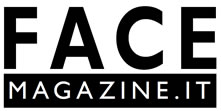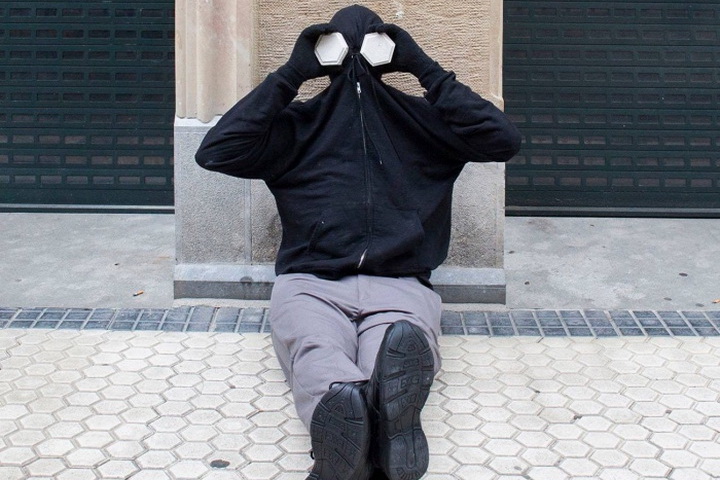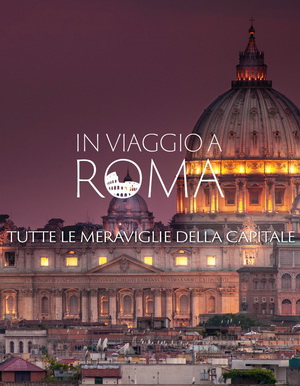Mark Jenkins, classe 1970, è nato negli Stati Uniti dove tuttora vive e lavora. Jenkins è noto per le sue sculture iperrealistiche di persone, animali e oggetti inserite nello spazio urbano. Opere consegnate alla città e poi destinate a scomparire o deteriorarsi. Le sue figure assumono posizioni e forme surreali, quasi astratte.
Rero è francese, è nato nel 1983 e le sue opere sono basate sul linguaggio. I suoi lavori, frasi o parole barrate da una spessa linea nera, rappresentano la negazione dell’immagine e l’autocensura. A metà tra l’arte urbana e l’arte concettuale, le opere di Rero sono quasi sempre site specific, realizzate in spazi urbani abbandonati o in paesaggi naturali e selvaggi.
Insieme, portano a Milano la nuova mostra “Rules of Engagement“ di cui FACE Magazine.it è media partner e che Wunderkammern ospita, nella sua sede milanese, dal 20 settembre al 28 ottobre. Noi li abbiamo incontrati e in questa intervista si raccontano.
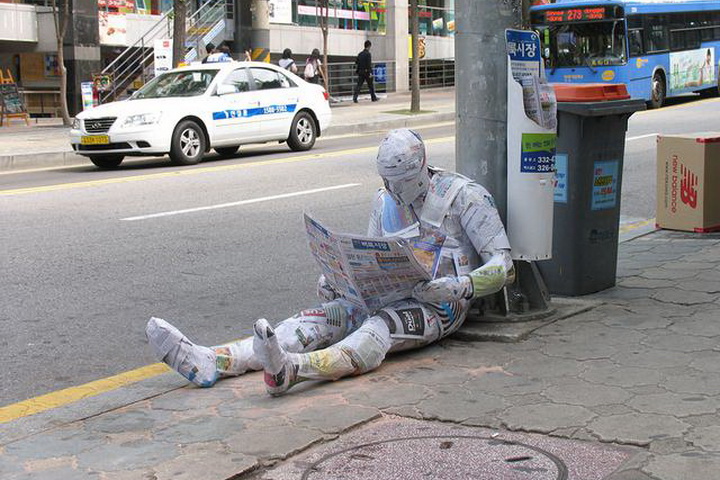
L’intervista
Mark Jenkins | Rero
Siete due artisti ormai affermati a livello mondiale. Come è nata questa vostra passione?
Rero: Dai Graffiti.
Mark Jenkins: E’ nata un po’ sottosopra. Non ho studiato arte ma sono diventato un artista e poi gli studenti di arte hanno studiato me.
Cosa è l’arte per voi?
Rero: Esprimere se stessi e cercare di rendere visibile ciò che è invisibile agli occhi umani.
Mark Jenkins: Il mondo in sé è ordinario. Ma ogni artista ha la sua ricetta.
Vi è mai capitato di fermarvi a spiare le reazioni e gli sguardi dei passanti davanti alle vostre opere? Quali reazioni suscitano maggiormente?
Rero: Non proprio. Quando faccio un’installazione, le lascio fuori, in spazi aperti e gratuiti. Poi lascio interagire l’opera con i passanti senza controlli.
Mark Jenkins: Non mi piace la parola “spia”. È per me un esperimento sociale e la chimica che si verifica sarebbe contaminata se mi comportassi come uno scienziato che mette il dito nel bicchiere.
C’è molta confusione tra street art, graffiti e arte pubblica. Qual è il vostro punto di vista?
Rero: La ragione è che cerchiamo di trasmettere energie e concetti diversi nello stesso istante. Ma non è possibile. L’arte di strada sta diventando sempre più grafica su tela, graffiti, decorazioni per muro e arte pubblica in spazi privati. Penso che stiamo producendo arte, in molti luoghi diversi senza frontiere. Siamo sul confine.
Mark Jenkins: Concordo.
L’arte nelle strade e sui muri: legale o illegale?
Rero: Immagino sia tollerato se il tuo intervento è comprenso dalla maggioranza. E’ una questione sociale e intellettuale ed è una ricchezza per la democrazia.
Mark Jenkins: L’arte fuori dai muri è legale finché è abbandonata a se stessa, poi rischia di diventare spazzatura.
Quali sono le fonti di ispirazioni nella realizzazione delle vostre opere?
Rero: Filosofia e vita quotidiana.
Mark Jenkins: Per fortuna le mie idee affiorano dal subconscio. Ho letto che questo è il risultato di dati conflittuali che creano queste esplosioni. Non so se sia un segno di un cervello sano, o se debba indossare un casco atomico.
Qual è il tuo rapporto con l’Italia? Pensi che l’arte abbia in questo paese l’attenzione e lo spazio che merita?
Rero: Amo la sensibilità del popolo italiano e il rapporto che ha con l’arte. L’arte è parte integrante della loro vita quotidiana. Ho fatto pochi progetti in Italia (Roma, Napoli e Milano) e in ogni luogo ho avvertito l’importanza dell’arte per il popolo italiano, è come una necessità vitale come il vino e la pasta. L’arte è un bel modo di perdere tempo prima di morire.
Mark Jenkins: Haha, beh sarebbe narcisistico dire no, ma come artista di strada prendo lo spazio che mi serve.
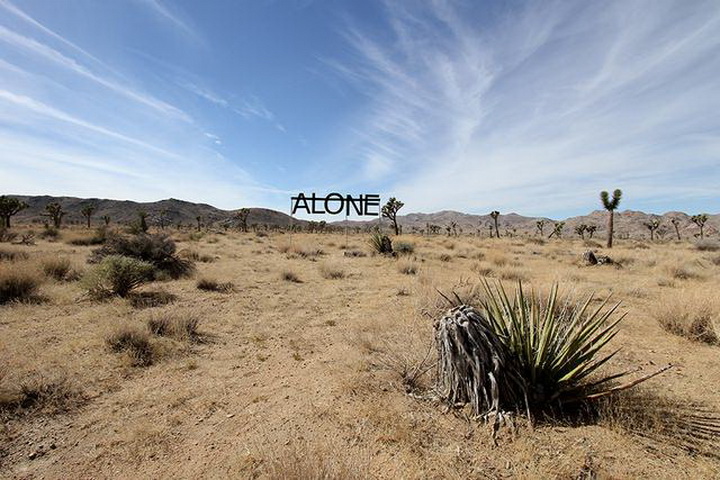
Interview (english version)
Mark Jenkins | Rero
You are two artists internationally renowned. How this passion for art has born?
Rero: From Graffiti.
Mark Jenkins: For me it was breech born. I didn’t study art but rather I became an artist and then art students studied me.
What is art to you?
Rero: Expressing yourself and trying to make visible what is invisible for human eyes
Mark Jenkins: The word itself tastes like chicken but each artist prepares their own recipe
It has ever occurred to you to spy on passers-by’s reactions and glazes in front of your artworks? Which reactions are the most triggered?
Rero: Not really… When I do one installation I let it breath outside for free… After I let it interact with the passers-by without control…
Mark Jenkins: I don’t like the word “spy”. It’s for me a social experiment and the chemistry occurring would be contaminated if I’m identified akin to a scientist sticking his finger in the beaker.
There’s a lot of confusion between street art, graffiti and public art. Which is your point of view?
Rero: The reason is that we try to bring different energies and concepts in the same ism… But it’s not possible… Street art is becoming more and more graphism on canvas, graffiti, decoration for wall and public art in private space… I guess we are just doing art in general and in many different places without borders. We are on the line.
Mark Jenkins: I agree.
Art in the streets and on walls: legal or illegal?
Rero: I guess tolerated if your intervention is understandable from the majority… Social and intellectual problem and advantage in democracy…
Mark Jenkins: Art off the walls is legal until its abandoned, then it’s littering unless the art is a bicycle.
Which are the main sources of inspiration in the production of your artworks?
Rero: Philosophy and every-day life.
Mark Jenkins: Fortunately for me ideas just kind of jump into my consciousness from the sub. I read this is the result of conflicting data and it creates these explosions. Not sure if it’s a sign of a healthy brain, or if I should wear an atomic helmet.
Which is your relationship with Italy? Do you think art has in this country the attention and space that it deserves?
Rero: I love the sensibility of Italian people and the relation they have with art. Art is totally part of their everyday life. I did few projects in Italy (Roma, Napoli and Milano) and in every place we can feel the importance of art for the Italian people, it’s like one vital necessity like wine and pasta… Art is great to waste time before dying…
Mark Jenkins: Haha, well it would be narcissistic to say no, but as an outdoor artist I take the space I need.
Info
Mark Jenkins e Rero
Rules of Engagement
20 settembre – 28 ottobre 2017
Wunderkammern
Via Ausonio 1A, Milano
Ingresso libero
www.wunderkammern.net

